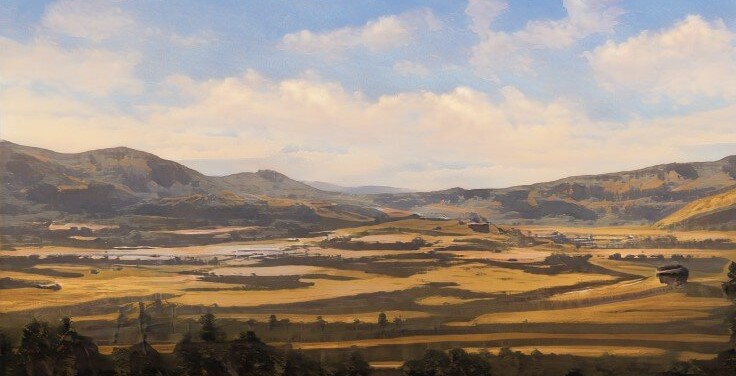Scourge Wisp
The low drone of the Scourge Wisps leathery wings has sent shivers down the spine of many visitors to the coastline of cressebore. While any individual could easily fit in the palm of your hand and should not cause terror, however a single sting from it's barbed arm stalks easily causes paralysis and death. The few survivors of its sting describe feeling as if an invisible giant was sitting on their chest. To make matters worse sailors rarely encounter just one Wisp. They hunt in packs to support their home colony, with each individual having a specific role in the hunt. Sailors who have returned from visiting Cressebore report individual Wisps being willing to dive bomb a target with little regard for their individual safety.
Basic Information
Anatomy
The Scourge Wisp is a colonial social species. and the different individuals is a colony have different morphology depending on their role. The Wisps all have a triple segmented body covered with a hard smooth exoskeleton. The rear segment contain a large powerful set of legs that the Wisps can use for springing off the ground. The largest middle section has a set of wings the it can use to glide around and awkwardly fly under its own power. The top section has a pair of appendages that the Wisps can use for aiding its movement or manipulating objects. The top section also has a large set of serrated pincers, however their does not appear to be a mouth. Two compound eyes protrude on either side of the pincers. All the wisps can awkwardly lumbar forward by using their fore and aft appendages. However, they can move much more gracefully by extending their wings a pushing off with their super powerful spring loaded rear legs. They then glide to the next spot and explode in another leap.
Workers
The worker wisps have a enlarged set of pincers that seem extra large and its fore appendages have developed into two sets of small pincers that can perform more delicate maneuvers. Workers are responsible for dissecting larger carcasses and carrying them back to the hive.
Hunter
The hunters are the smallest wisp with a more aerodynamic body. Their front appendages end in a curved venomous spike.
Nurses
These Wisp can barely move. They stay in the hives consume the meat brought back by the workers. They have a small set of pincers on the front, and a small opening between the pincers. To eat the meat, they stick their head in the meat and excrete a digestive bile breaking down the meat into a slurry and then sucking up the dissolved meat. The nurses then use the meat to create a fatty lard that they feed to everyone in the colony. The slurry contain a mix of digestive enzymes and symbiotic bacteria that digest the meat and protect it from other pathogenic bacteria. Due to this digestive process going on at the colony, a Wisp colony can sometimes be smelled from over a mile away.
The Empero
The most important member of the colony. Responsible for the creating all the larva of the colony. A Empero Consort starts a one of the smallest wisps that can continually fly under its own power. The consort flies out an attempts to find another consort to mate with. The consort is capable of both making sperm and producing larva. Once they have mated, the Empero produces the first few larva and starts its own colony. Once the colony is started the Empero continues to grow and can even reach the size of a large goat if the area is fertile. If the area ever get depleted of creatures to hunt. The Empero is capable of creating a genetically identical mirror heir that then the Wisps will follow to establish a new colony location.
Ecology and Habitats
The Wisps are a apex praetor and a key stone species. On Cressebore their is no large magafauna. The largest creatures are about the size of a small dog and have evolved to outrun the wisps. Many of Cressebore is filled with many non communal semiphorbian species that the Wisps only hunt if their is a shortage of the slightly larger prey.
Scientific Name
Semiphrbian Unitus Scourgian
Geographic Distribution


Comments